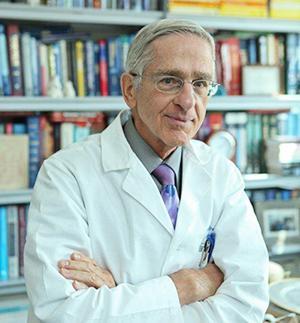William F. Balistreri, MD, FAASLD

William F. Balistreri, MD, FAASLD
Cincinnati Children's Hospital Medical Center
Name: William F. Balistreri, MD, FAASLD
Institution: Cincinnati Children's Hospital Medical Center
When did you join AASLD?
I joined the American Association for the Study of Liver Diseases [AASLD] in 1976.
Describe what AASLD was like at the time you joined.
What I recall was a focus on liver pathology, in both the abstract presentations and a recurring (biennial), specific Liver Biopsy Post Graduate Course. In these early meetings, presentations also addressed newly developed liver "function" tests (using analysis of enzymes, prothrombin time, gamma globulins, and protein electrophoresis, as well as assessment of the fate of injected substrates, such as BSP).
The clinical entities of key interest were alcohol-associated liver disease and viral hepatitis – there was no mention (and presumably no recognition) of the now dominant NAFLD. Of course, liver transplantation was still a dream!
What do you feel is your greatest accomplishment which has contributed to the success of AASLD?
There are a few accomplishments I would like to share.
- Helping to catalyze the formal emergence of a body of knowledge and an organized focus on disorders of the liver in early life – Pediatric Hepatology – the development of a new clinical subspecialty. Over the past 20 years, the pace of patient‐ and laboratory‐based research in the field has expanded, allowing the deciphering of the consequences of genetic or metabolic aberrations on immature liver structure and function. These clinical advances led to development of specific approaches to the diagnosis and management of liver disease in infants and children, including both liver transplantation and nontransplant treatment options. These events were followed by expansion of the workforce, creating a critical mass of pediatric hepatologists / transplant specialists, consisting of individuals with focused, specialized skills and techniques.
- This rite of passage has been marked by the election of four pediatric hepatologists to AASLD leadership (President).
- Further validation of the field occurred with approval of the petition to establish a Certificate of Added Qualification in Transplant Hepatology by the American Board of Pediatrics. (ref = HEPATOLOGY 2013;58:458‐476)
What would people be surprised to learn about AASLD from "back in the day?"
Maybe not too surprising – the meeting took place in small, smoke-filled rooms, with limited reliance on audiovisual elements (simple podium presentations – No PowerPoint!).
There was a relatively selective membership process!
What would you say is AASLD's great strength?
AASLD has several strengths.
- The broad focus of AASLD activities and thus the ability to unify and integrate all those with an interest in liver disease – thus the opportunity for all to have a voice.
- The promotion and discussion (at several levels) of the extraordinary advances in basic sciences and how to successfully apply these principles to human liver disease.
- Development of a broad and accessible education profile
- Interaction with other societies – the success of the AASLD has fostered the growth and development of international liver organizations such as the International Association for the Study of Liver Diseases, the European Association for the Study of the Liver, and the Asian Pacific Association for the Study of the Liver.
What would you say is AASLD's biggest accomplishment in its first 70 years?
There are several "society related" accomplishments – specifically the establishment of The Liver Meeting® and the inauguration of the official journals – HEPATOLOGY, Clinical Liver Disease, and Hepatology Communications. In addition, the establishment of hepatology as a focused discipline – leading to ABIM and ABP Certification, with expansion of the work force.
In terms of clinical impact, AASLD members (and The Liver Meeting®) have played a major role in the identification of the causative agent of "non-A non-B" hepatitis – the molecular delineation of the hepatitis C virus in the late 70s. This allowed, over the next 25-30 years, the development of highly effective antiviral agents – a major step towards global elimination of this potentially devastating disease.
The AASLD members and The Liver Meeting® have highlighted detailed molecular studies of inherited forms of cholestasis. This in turn led to a greater understanding of normal liver metabolism (e.g. bile acid metabolism and transport mechanisms), as well as disease-related adaptive processes. This has opened the possibility of gene or cell therapy for these disorders.
There are several other accomplishments that could be mentioned: two examples – the advances in liver transplantation and linkage of liver disease mechanisms and potentially treatment to the gut microbiome.
How/where do you seen AASLD in the next 70 years?
I would envision continued growth and impact of the advocacy profile of AASLD – bringing public attention to liver health and disease. I also see the following happening.
- Expansion of the AASLD Foundation focus on research funding.
- Innovative discovery and precise application of clinical tools such as disease markers, genomic profiles, and novel pharmaceuticals.
- Given the success of the education profile of the AASLD, I would expect continued development of focused single topic conferences
- Given the impact of social media, I would expect enhanced communication among those interested in liver diseases – fortifying the bridges between basic scientists, physician-scientists and clinicians.